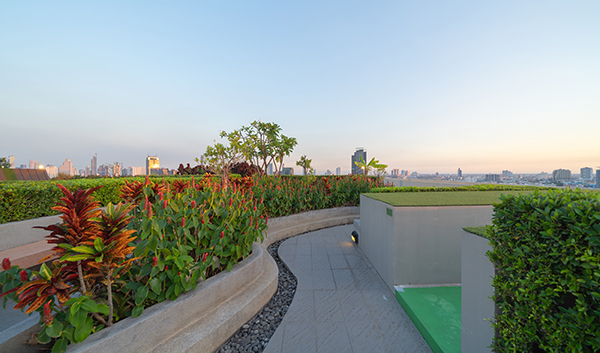Maximizing Energy Efficiency with Cool Roofing Systems
Author: Amy Freeman | January 15, 2024
When it's hot outside, you're more likely to pick light-colored clothing than dark-colored clothing. Why? Lighter colors reflect the sun's light and heat, while dark colors absorb it — you'll stay cooler in a white T-shirt than in navy blue or black. The same is true of the roof of your building. Lighter-colored roofs reflect the sun, boosting your building's energy efficiency and keeping your cooling bills in check.
A cool roofing system can help reduce your energy use while offering numerous other benefits.

What Is a Cool Roofing System?
Cool roofing systems reflect more sunlight than standard roofing systems, which helps keep building temperatures lower. According to the U.S. Department of Energy, a standard roof can get as hot as 150 degrees Fahrenheit on a sunny day, but a cool roof can be as much as 50 degrees cooler under the same conditions.
Cool roofs keep cool thanks to solar reflectance, which is the measure of the solar energy that bounces off the roof, or thermal emittance, meaning it's able to release heat and keep itself cool. Ideally, a cool roof will have both high solar reflectance and thermal emittance, according to Energy Star.
Cool Roof Options
Cool roofing systems can be installed on either steep-slope or low-slope roofs. The materials used for the roofing system will depend on the type of roof. While many people assume a cool roof is white, any lighter-colored roof can be a cool roof, as long as it is reflective.
Materials
The materials available for a cool roof on a commercial building depend on the roof's slope. If your building has a steep slope, your cool roofing options include:
- Asphalt shingles: Look for shingles with cool- or light-colored granules.
- Metal shingles or tiles: Look for tiles or shingles with a cool- or light-colored paint. Some shingles are available with a reflective mineral granule surface.
- Concrete tiles: Look for concrete tiles with a light- or cool-colored polymer or slurry coating.
Cool roof options available for low-slope commercial roofs include:
- Light- or cool-colored single-ply membranes
- Built-up roofs with a reflective coating
- Spray polyurethane foam
Green Roofs
Green roofs are a type of cool roof and may be a way to improve your building's energy efficiency while creating a usable space on the roof. Creating a green roof means more than just sticking a few plants on the top of a building. The plantings and vegetation play a critical role in the roof's design and structure — the building needs to be able to withstand the weight of the plantings, and someone needs to be able to get on the roof regularly to care for the vegetation.
Green roofs keep a building cool thanks to evaporation. The soil around the plantings can also add another layer of insulation.
Benefits of Cool Roofing
Cool roofs are more than just eco-friendly. They offer multiple benefits to building owners and occupants. Some of the advantages of cool roofs include:
- Increased comfort: A cool roof can lower the temperature inside a building during the summer or other warm periods, meaning a building can maintain comfortable interior temperatures with less air conditioning.
- Extended roof life: Keeping the roof itself cool can help prolong its life, meaning you don't need to repair or replace it as frequently.
- Lower costs: When your building uses less air conditioning, your energy bills drop. Fewer roof repairs and replacements also help keep your costs in check.
- Reduced air pollution: Since you may use less air conditioning after installing a cool roof, your building may produce fewer carbon dioxide emissions. Installing a green roof may also help reduce air pollution.
Increase Energy Efficiency with a Cool Roof
Cool roofs increase energy efficiency in two ways. Within a building, they help reduce the need for climatization, meaning you don't need to have the air conditioning running at full force to keep the building at a comfortable temperature.
Outside of a building, a cool roof, with a white or light reflective color, can help reduce the heat island effect so common in cities. Heat islands are created when dark-colored materials, such as traditional roofs and asphalt on the road, absorb the sun's heat. That, combined with fewer trees and vegetation, makes urban areas hotter, meaning more energy is required to cool them down. When the sunlight bounces off a cool roof, the heat island effect is reduced.
When to Install a Cool Roof
Should you run out and install a cool roof on your building right now? If your roof needs replacement or repair, it may be a good idea. Cool roofing materials typically don't cost more than traditional materials, so switching to a cool roof can save you money over time without costing you more upfront. If you don't yet need to replace your roof, keep a cool roof in mind when the time comes to upgrade.
Installing a cool roof on your commercial building will help you and your customers beat the heat, while saving money on energy bills.